Some days seem to be nearly endless, that much one experiences and sees. That was the case on this Thursday in February. In retrospect, all is in its chronological order, morning followed by afternoon. This afternoon appeared to expand the more we were on our way. This was not alone due to the drowsy desert landscape in the sun. Areas where hardly life was supposed to be, emerged as settled and even cultivated. How livelihood can be made in such region? Mystery and also memorable lesson by the local people on the struggle for survival. They all have families, their children go to school, mostly at least, and together they are bearing the barren conditions of life. It starts with preparing a place where they all can live. Mainly they are living on livestock farming, sheep, goats, and camels, rarely cattle. Sheep, goats, and camels can live on the modest desert and steppe plants of the region, cattle need more than this.
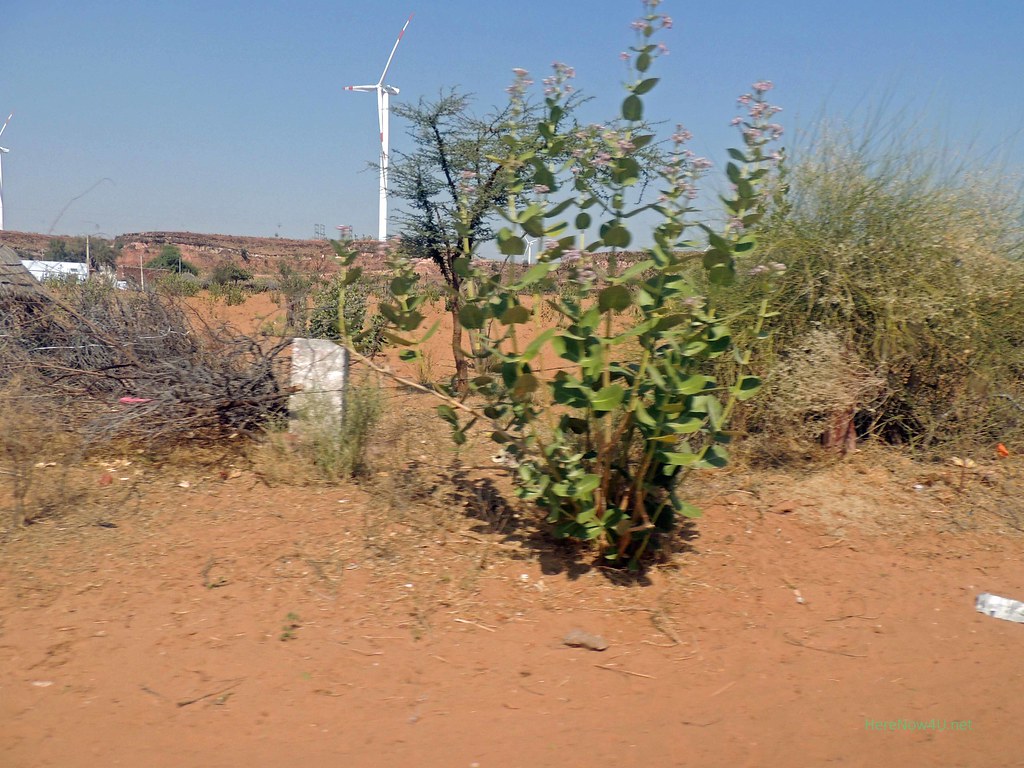
Thorn hedges protect the dwellings against animals, typical landscape after Osian in direction of Ostra Parshvanath.
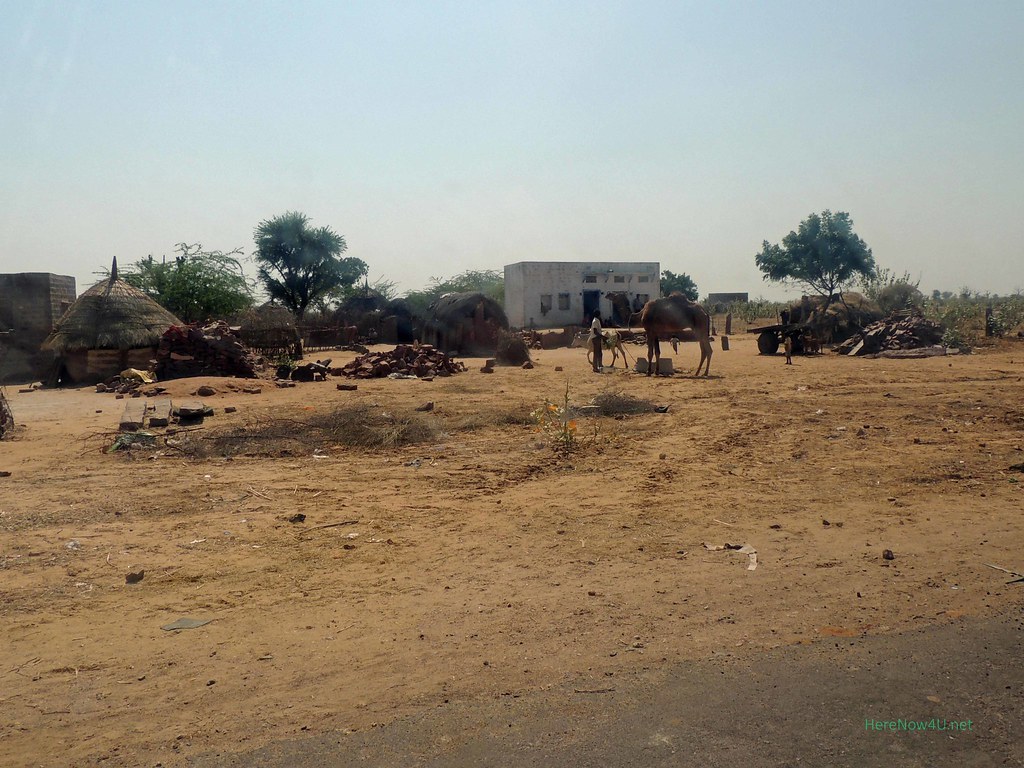
Aspiring location: Round huts, one chalked-up stone house, bare brickwork, some stone heaps for the buildings planned in future.
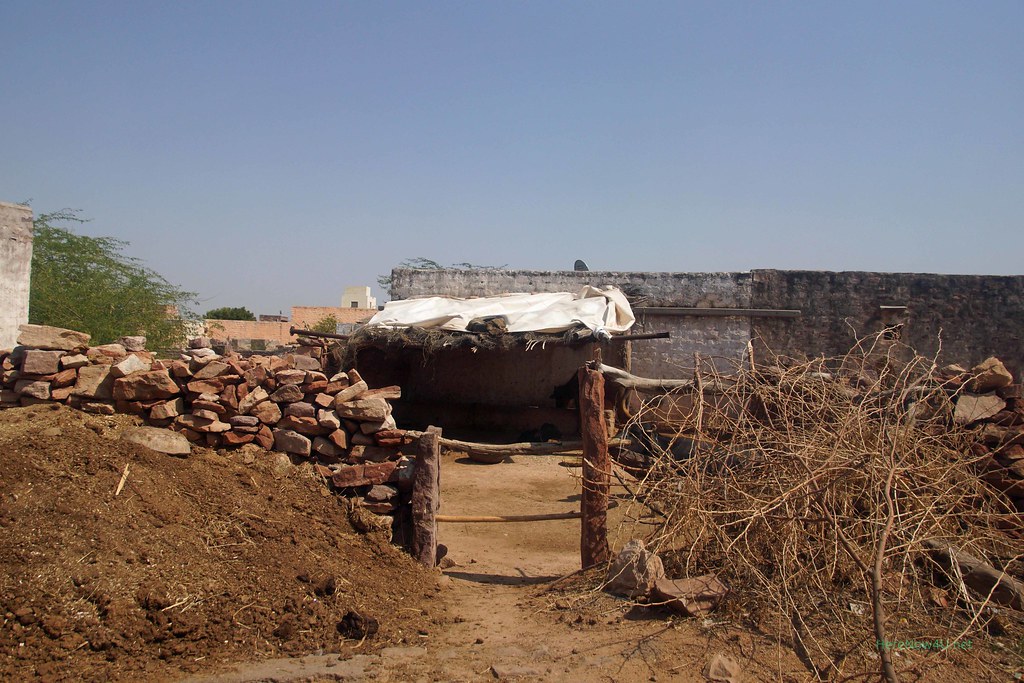
A village with several stone houses…
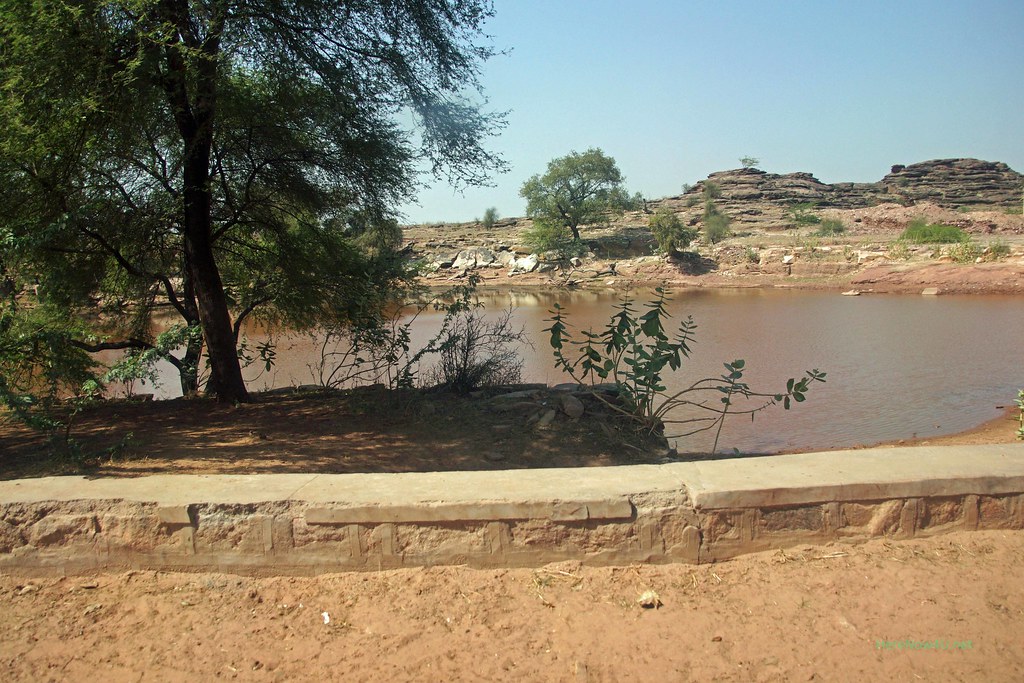
…and a traditional rainwater collection pond..
The distance between Osian and Ostra Parshvanath are 84 km. According to Google maps one hour and 45 minutes are needed by car. This indication is surprisingly true, as the road condition in this rural area is good in general, apart from wholes and sharp curves in special. Actually we needed only one hour and 30 minutes for this rarely frequented route, and earned some astonished glances from people at the roadside.
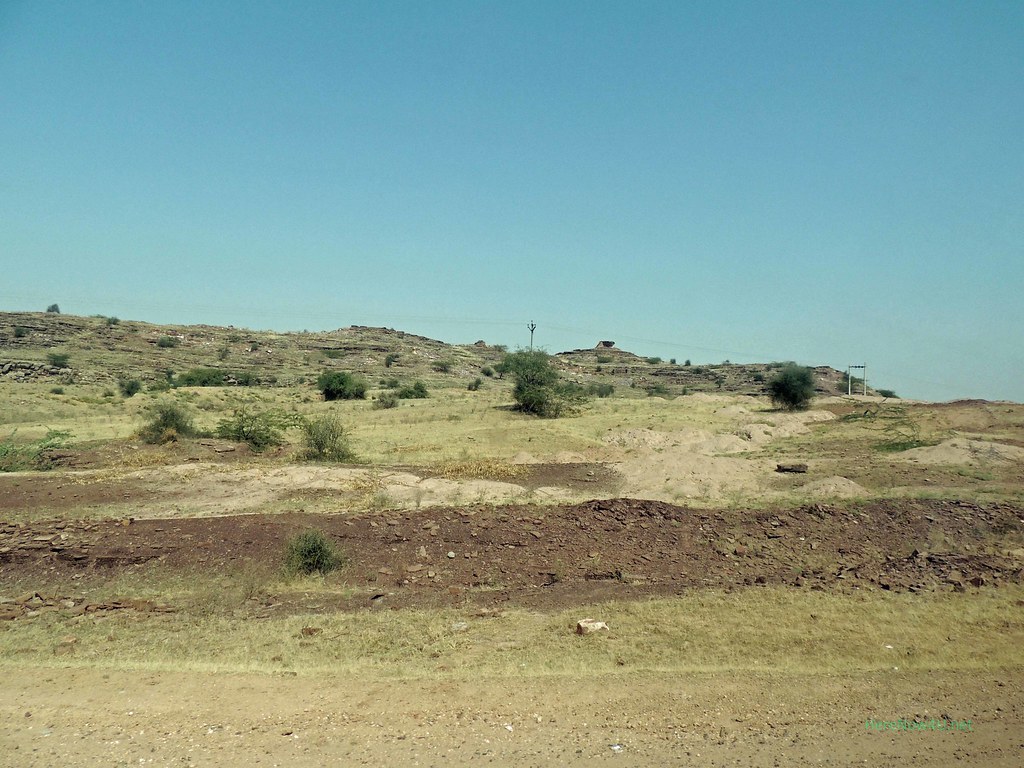
The more we approached the temple complex, the landscape became more and more hilly and penutious.
Settlements and villages became more remote, and often we saw people resting on the road side or courageously walking towards the next village. The roads were not much frequented; we encountered only few cars, the majority with cargo area. Cars here are not for transporting people, but rather to carry loads, construction material or animals. They increasingly replace pack animals as camels or donkeys. We continued in direction of the hills visible at the horizon after Gangani. Nowhere an indication to Ostra Parshvanath Jain Temple. One simply should know where to find it. Fortunately the Surana family knew the itinerary; certainly they had been there already. Just when I started wondering how far we still had to go, we suddenly stopped. Arrived! First there was not much more to perceive than the hills surrounding the valley. And no sound, it was so quiet! We walked a short way and then turned into a small alley. At its end a white marble temple was shimmering in the sunlight.
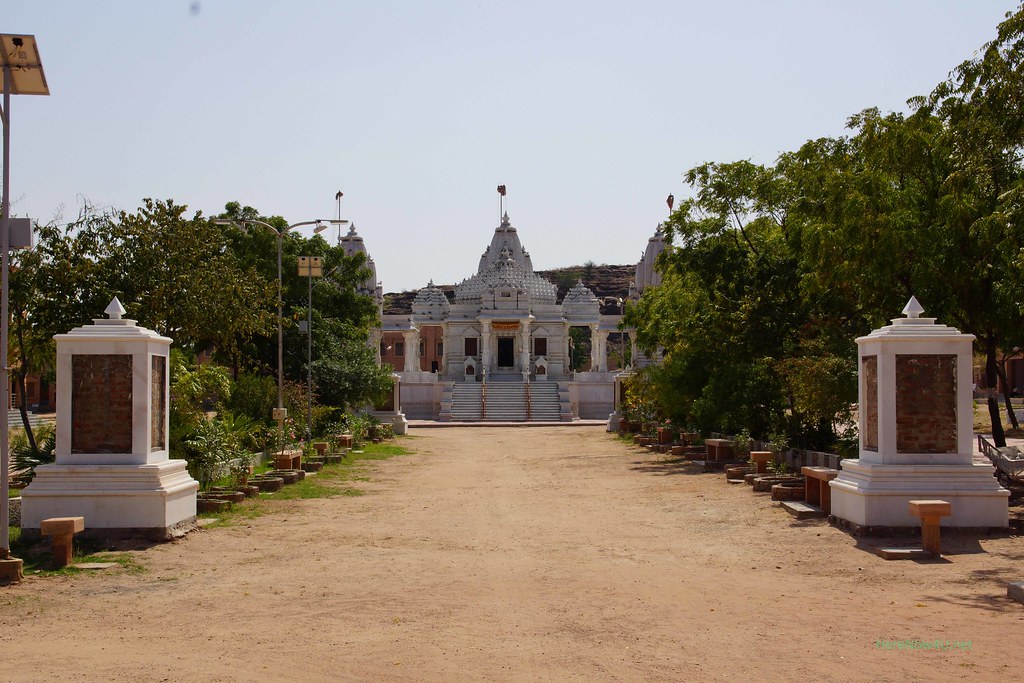
The new-built Parshvanath Temple of white marble
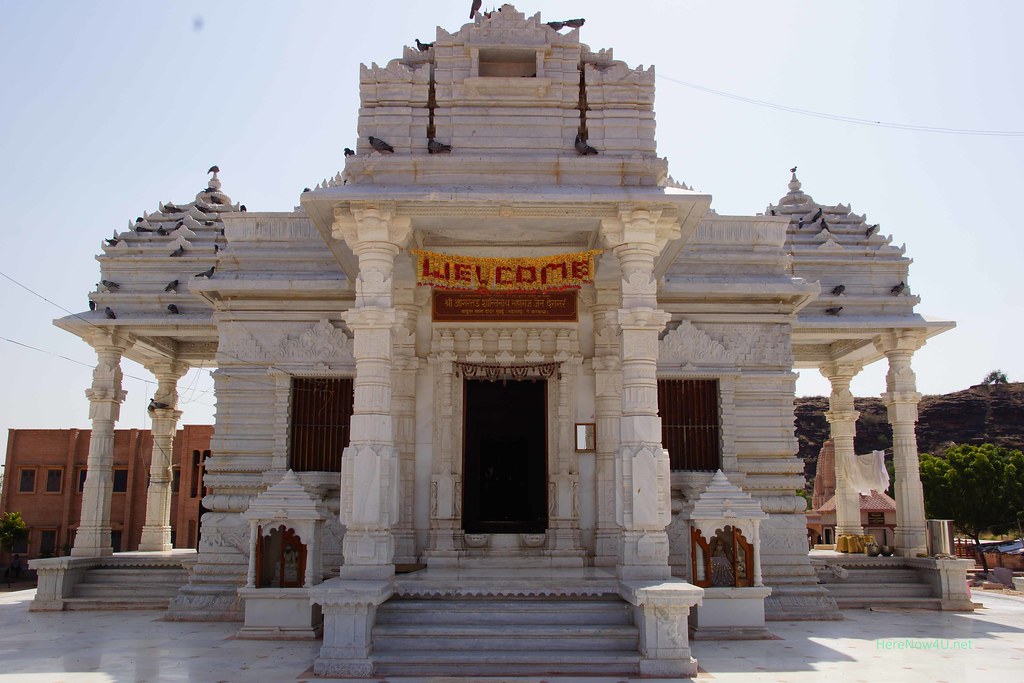
Main entrance of the new Parshvanath Temple, in the background (r) behind the gazebo for the Dada Gurus the Shikhara of the restored old Parshvanath Temple
In 2009 the construction of the new Parshvanath Temple of white marble was started following a suggestion of Shvetambara Acharya Dharamdhurandhar Suri, a disciple of famous Acharya Vijay Vallabh Suri. When Acharya Dharamdhurandhar Suri visited the old Parshvanath Temple in 2003, he had noticed the agglomeration of refined vibrations in this valley and perceived that the material and the subtle world are crossing here. But when he realised the extend of deterioration the temple had been exposed yet he motivated his followers not only to restore it, but also to create a new temple complex in addition. Beside the new Parshvanath Temple the construction work is in progress for a new temple for the Bheru ji called mountain and earth trolls - Batuk Bhairav Mandir -, as well as a large library to study the scriptures, and a Dharmshala for pilgrims, students, and scholars. One year after the restore work was finished in 2008 the expansion of the temple complex begun.
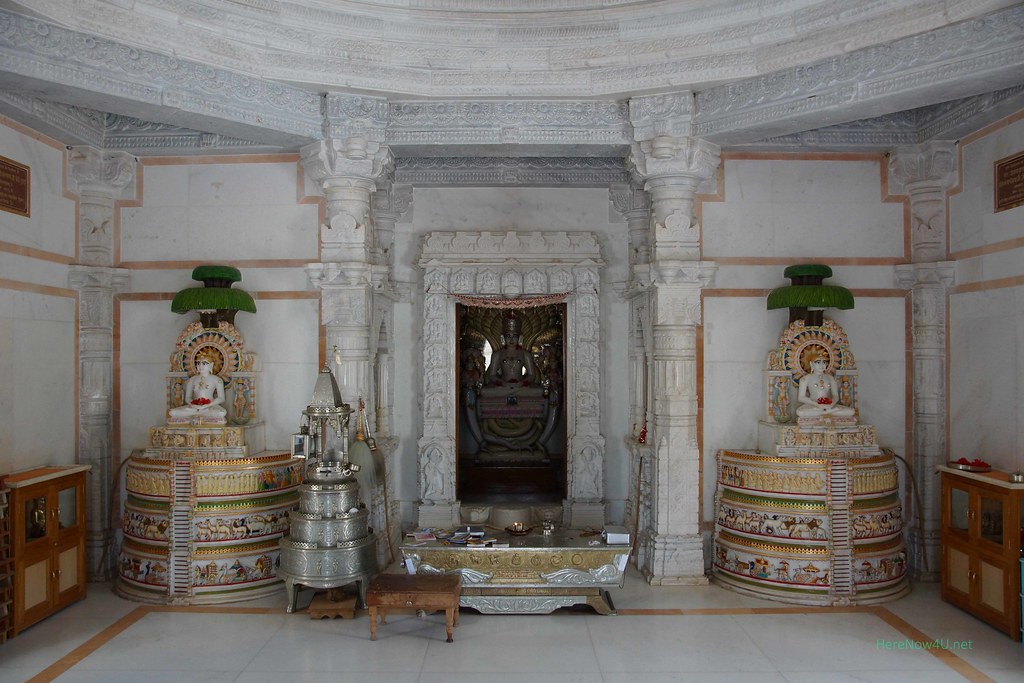
Hall of the new Parshvanath Temple with view on Garbhagriha
Entering the ample hall of the new Parshvanath Temple gives view to the door of the Garbhagriha flanked by depictions of 01. Tirthankara Rishabha while sharing the insights attained through enlightenment in the Samavasarana with his audience. In front and to its left there are devotional objects.
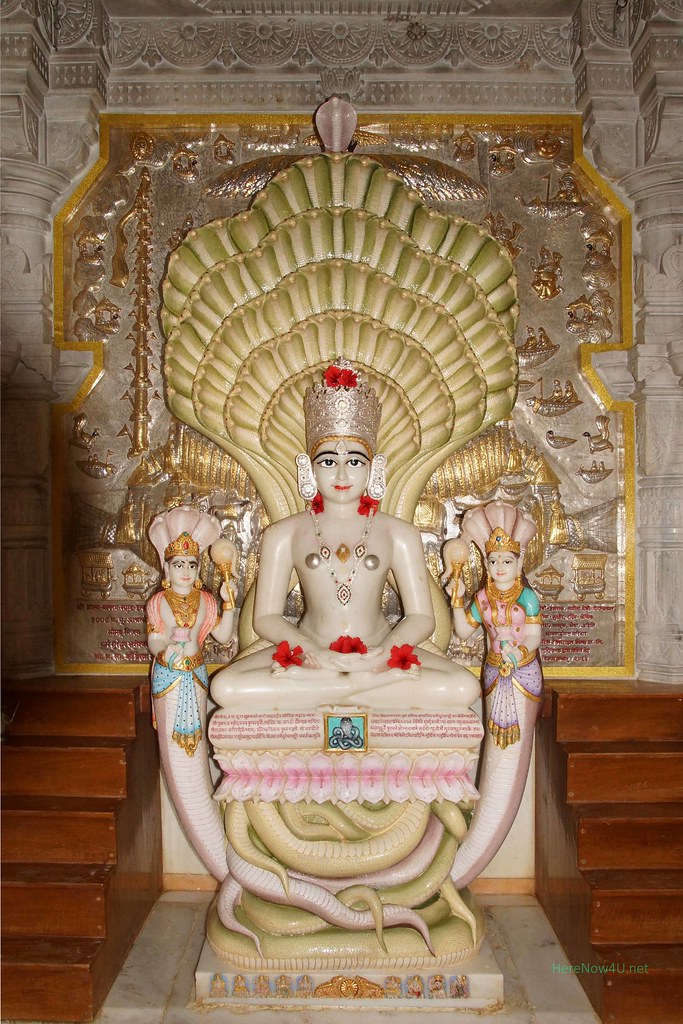
Mulnayak: 23. Tirthankara Parshvanath, flanked by his protector attendants, snake goddesses Padmavati (r) and Devendra (l)
This depiction of 23. Tirthankara Parshvanath refers to the legend that Parshvanath had given his compassionate blessings to two half-burnt snakes and appeased their pain caused by the fire through recitation of Namokar Mantra. A hostile envier of Parshvanath had lighted the staple of wood where the two snakes had sought shelter. Although Parshvanath could not prevent their death, they transformed into snake goddesses after leaving their fleshly bodies grace to Parshvanath’s blessings. Henceforth they protected him through several lifes from the persecutions of his enemy and envier..
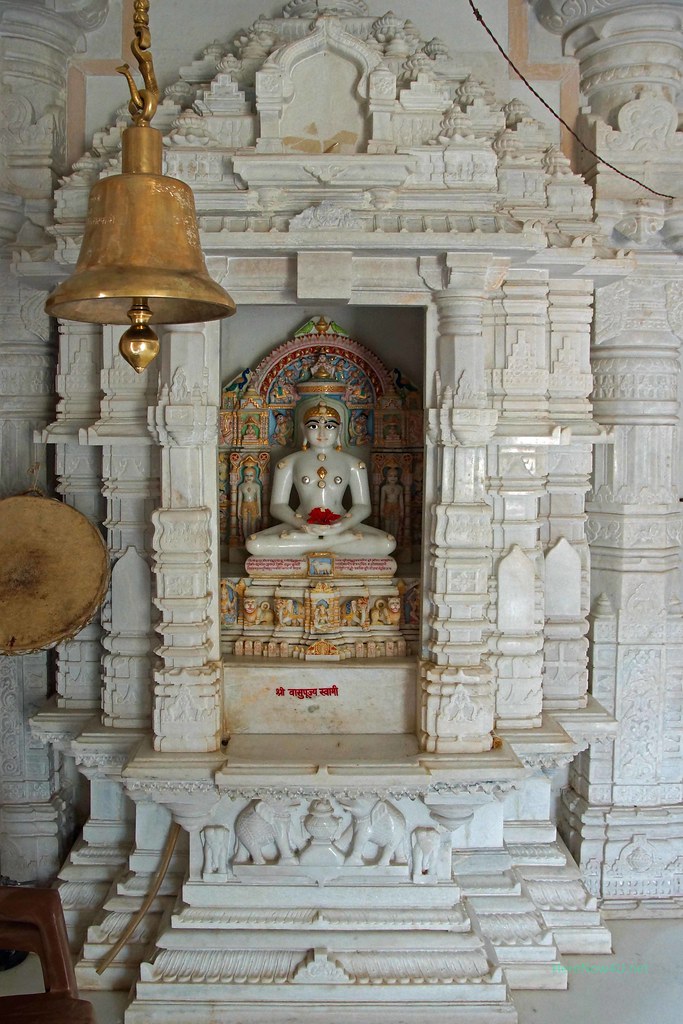
Right from the entry of the temple is this shrine of 01. Tirthankara Rishabha.

Left from the entry this shrine in honour of 08. Tirthankara Chandraprabha was installed.
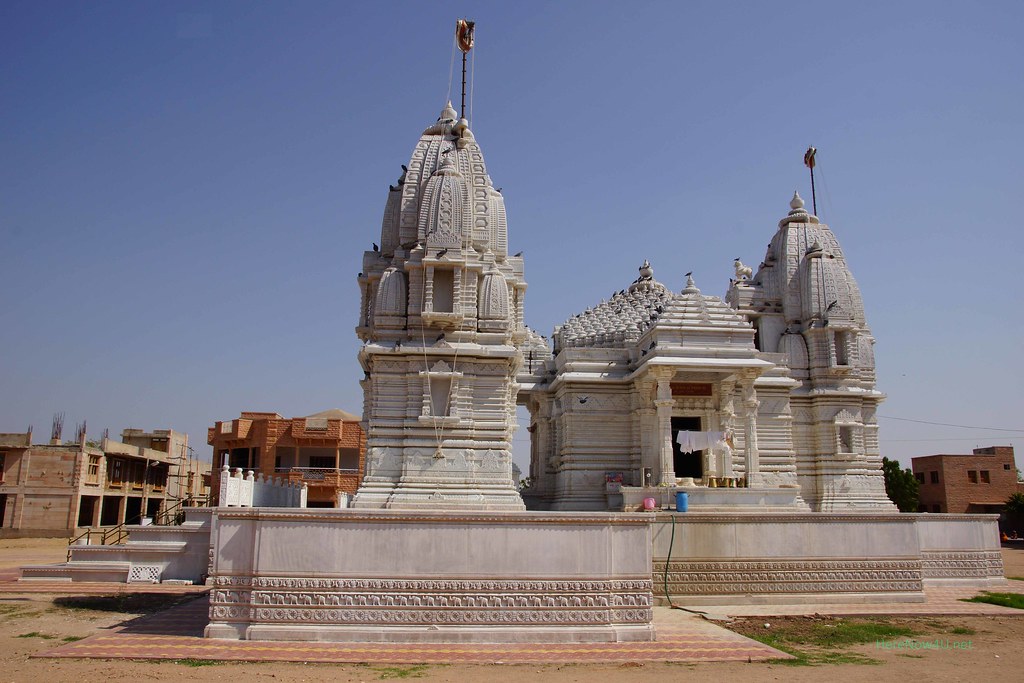
Side view of the new Parshvanath Temple, on its left library and Dharmshala are in progress.
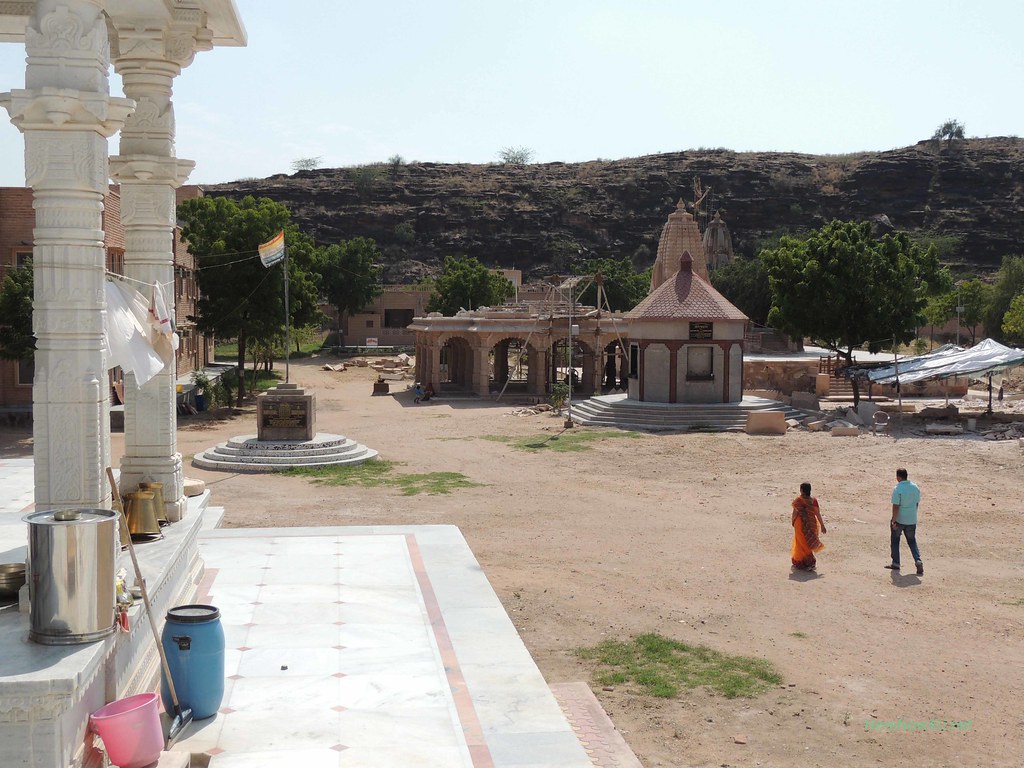
View on the surrounding hills from the new Parshvanath Temple, as well as on the gazebo for the Dada Gurus, the Shikhara of the old Parshvanath Temple, and the Batuk Bhairav Mandir in progress.
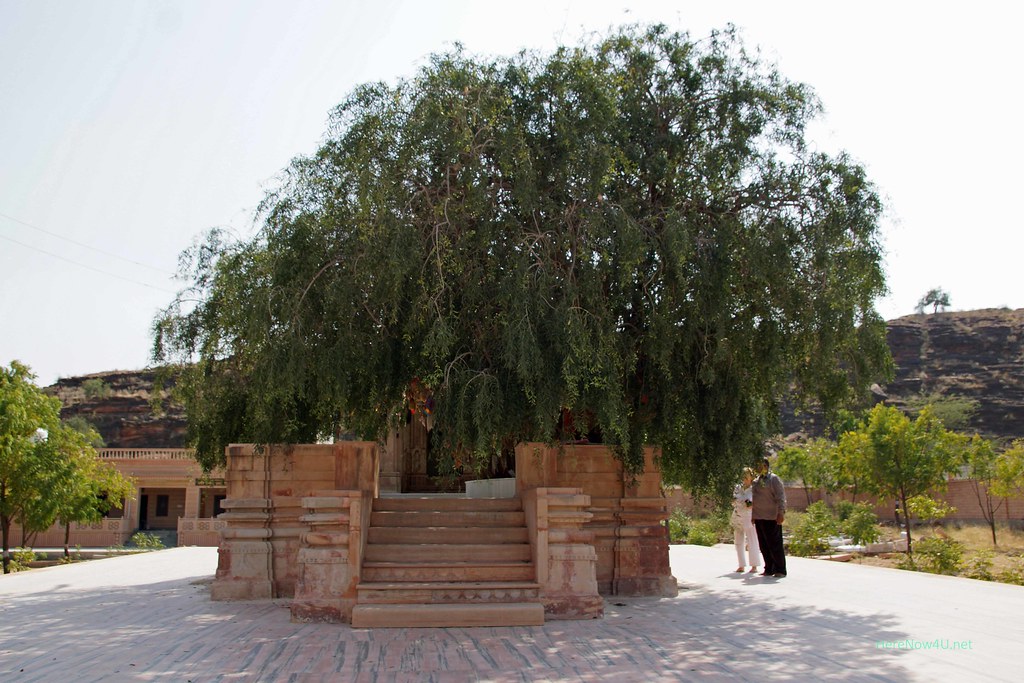
Ostra Parshvanath Temple with a centuries-old tree in front
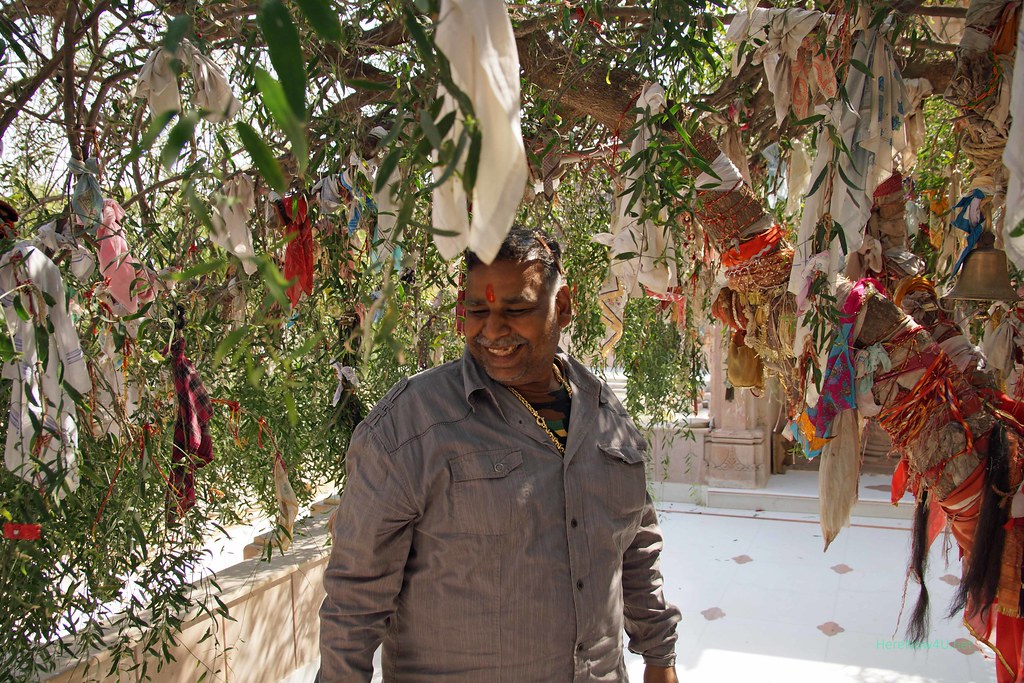
Shri Surana in front of the tree with desire for having children symbolising colourful cloths.

Mulnayak of the old temple:
23. Tirthankara Parshvanath. On the entrance of the Garbhagriha are 3 Tirthankaras: Parshvanath (m), 01. Tirthankara Rishabha (l), 24. Tirthankara Mahavira (r).
Acharya Dharamdhurandhar certainly has spoken from the heart of many Jain couples desiring to have children when he perceived Ostra Parshvanath as especially holy location. According to the legend the hills surrounding the temple since centuries are inhabited by a wonder-working clan of mountain and earth trolls named Bheru jis. The Bheru jis are said to fulfill the desire for having children. In the dim and distant past fertility rituals are said to have taken place here already. Later many monks have lived in caves of the hills surrounding the valley. Even for the Hindus the location is holy; in one of the caves still is a Shiva Temple to remember the Sadhu having attained enlightenment here.
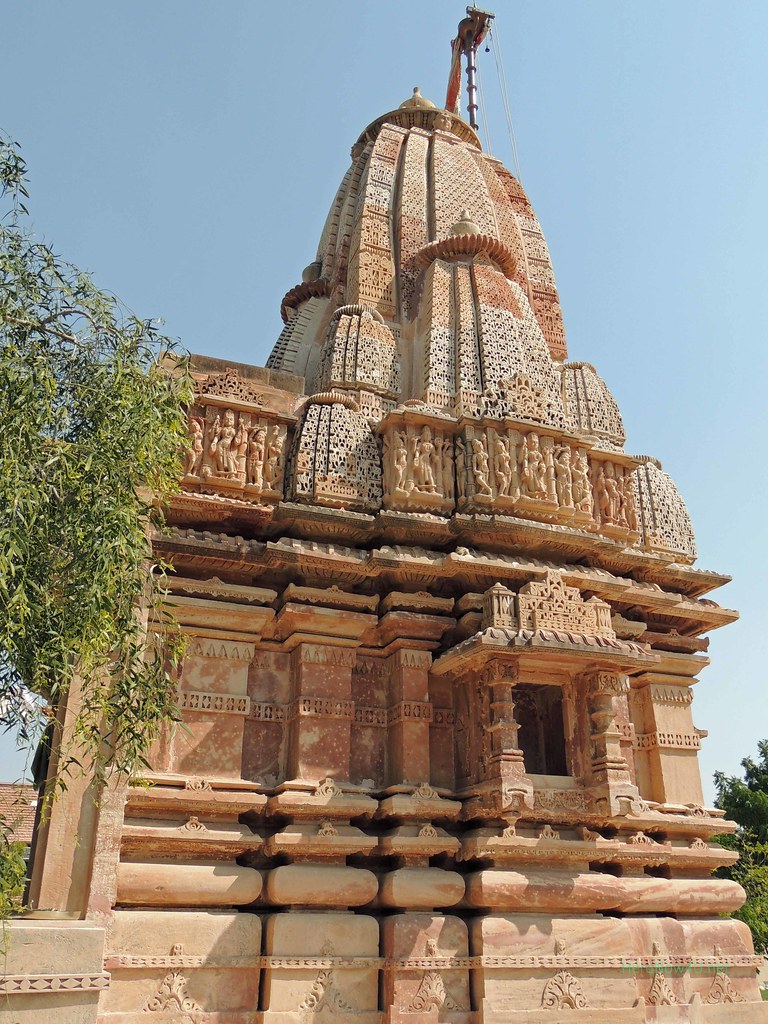
Side view of the old temple, the tree said to be as old as the temple on the right. l
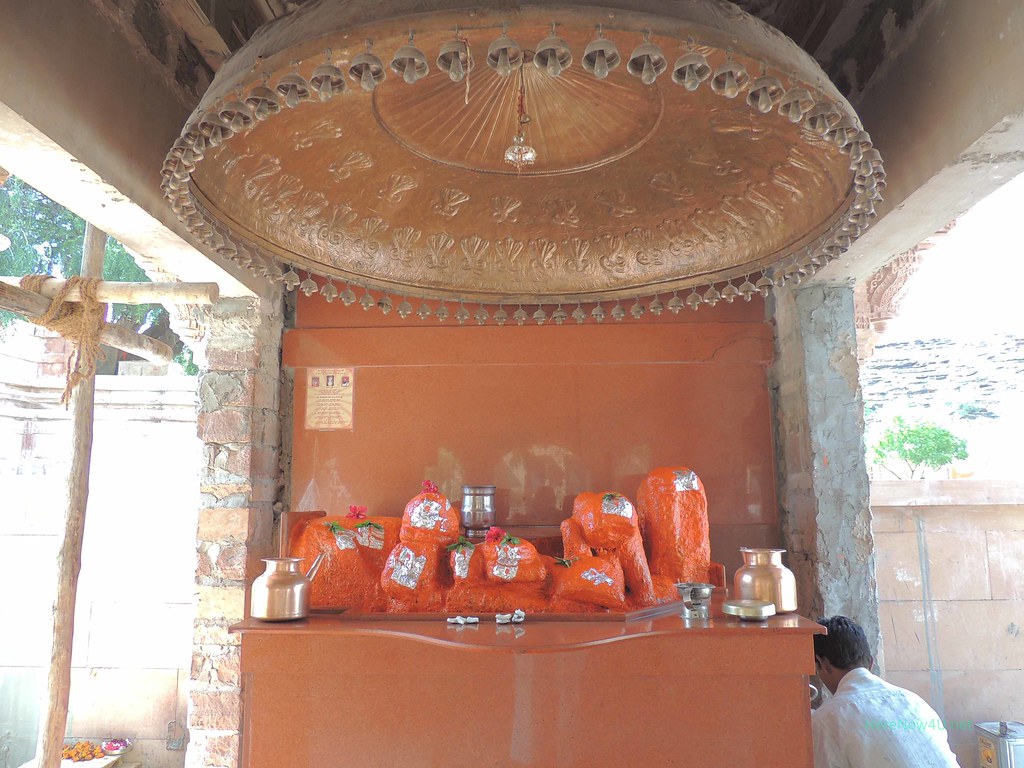
The Bheru ji clan in the Batuk Bhairav Mandir
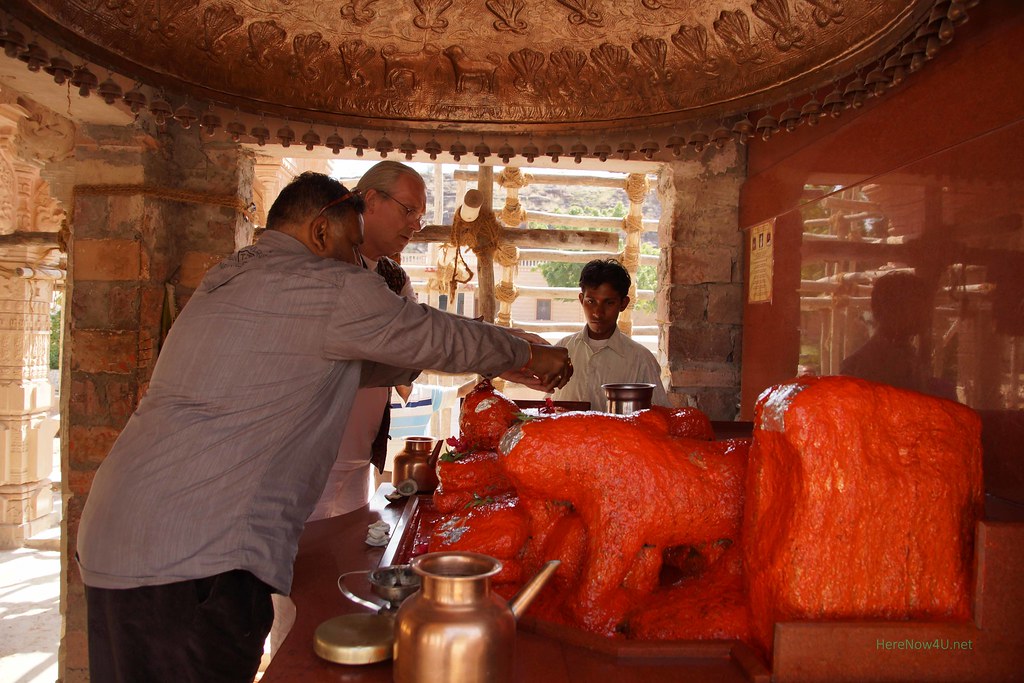
Shri Surana & Aparigraha Jain Geerdes honouring the Bheru jis
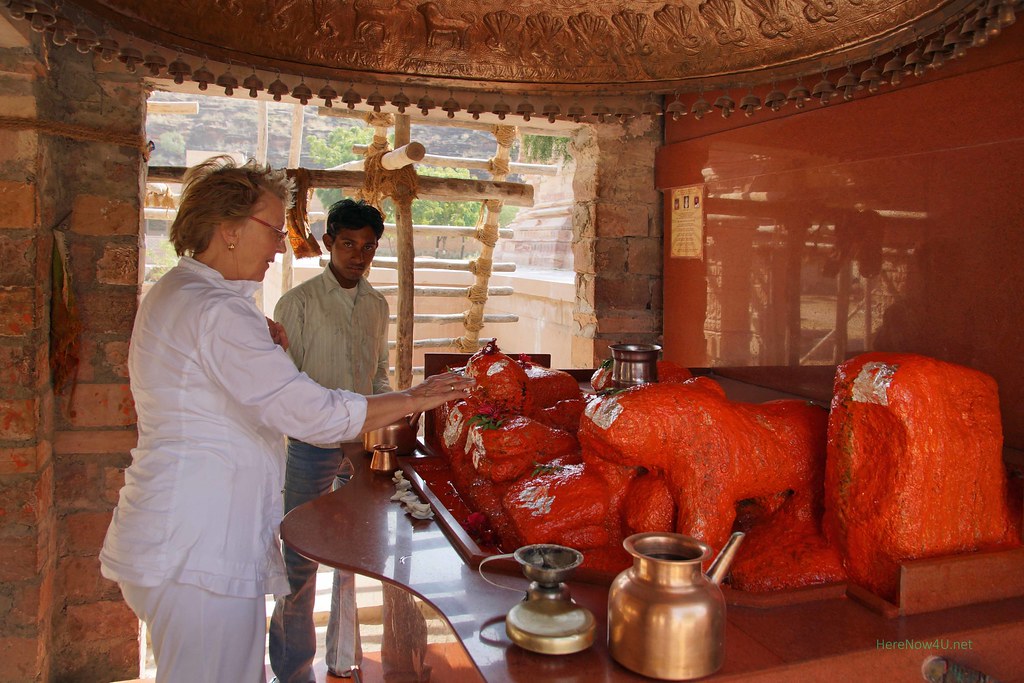
Carla Geerdes anointing the Bheru jis
When we prepared to leave, the manager of the temple approached our small group. He just had been back from a commission. He invited us to visit the picture gallery in the administration building and for tea. We had a nice talk during which I expressed my happiness to have found the temple and that it was open for visit. The manager of the temple gave us a fine smile and said, “Bheru ji has called you.” All right, that’s why everything went so well, and we did not get into trouble. The temple really was not easy to find. I imagined us sitting in a taxi from Jodhpur with a driver not familiar with this location, requesting locals for help never having heart of the temple. Oho. Deep inside, I was very grateful for the auspicious coincidences and bowed down to Acharya Dharamdhurandhar Suri. Without him all this would not have been possible.

Acharya Dharamdhurandhar Suri
 Editor Carla Geerdes
Editor Carla Geerdes